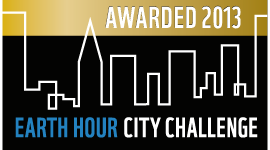Vancouver transport
Posted on March, 01 2012
Banning urban highways to lift life quality
Vancouver’s transport achievements began in the 1970s with popular concern arising about the trade-offs between urban highways and quality of life. After banning all new highways in the city, Vancouver pursued a path of urban development that led not only to a complete reversal of transport trends, it also gave Vancouver a top ranking for quality of life similar to that of a few European cities that also combine excellent public transport with attractive urban spaces.
Keywords: urban highways, depopulation, quality of life, transit-oriented development
Vancouver’s transition to sustainable urban development is marked by three key points: the banning of urban highways, a complete reversal of sprawl and depopulation trends, and becoming North America’s highest-ranked city for quality of life and one of the world’s four highest ranked cities (with Vienna, Zürich, and Geneva).
No urban highways
In the 1970s, citizen groups sought to stop any new highway construction in the city. The trade-off between liveable neighbourhoods and urban highways was the central concern. Campaigning in the 1970s led to the city abolishing construction of any new highways. This policy is credited with enabling public transport to flourish in Vancouver, and freeing the city’s urban spaces for high-quality use. One measure of its political popularity is that one of the leading activists, a lawyer, became mayor of Vancouver and then premier of British Columbia.
Complete reversal of trends
Similar trend reversals occurred once urban highways were banned – for car-use, urban density, public transport-use, central business district parking availability, and population.
- Vancouver’s urban density went from 24.9 person/ha in 1961, down to 21.6 in 1971 then further to 18.4 in 1981; but then it reversed, growing up to 20.8 in 1991, 21.6 in 1996, and 25.2 in 2006 (higher than in 1961).
- Car-use went up from 6,756 km per resident per year in 1981, to 8,361 km in 1991; but then it dropped down to 6,971 km in 2006.
- The use of public transport (per resident each year) went from 138 trips in 1961, down to 111 in 1981, then even lower to 95 in 1991; but it reversed up to 118 in 1996 and 134 in 2006.
- The number of parking spaces in the central business district increased from 341 per 1,000 jobs in 1971, to 444 in 1996; but then it reversed down to 389 in 2006 (while US cities averaged 509).
- After a depopulation trend during the 1960s-80s, Vancouver experienced phenomenal population growth of 23% in the years 1991-2006.
World-leading quality of life
In 2003 one of the leading surveys of cities’ quality of life ranked Zürich first in the world and Vancouver second in a tie with Geneva and Vienna – making Vancouver the only North American city, and the only non-European city, in the top group. These four cities all share a key strategy of providing excellent public transport to preserve and create highly attractive urban areas.
Another study, the British Columbia Sprawl Report 2004, found a clear link among three factors at work in the Vancouver region: the urban form (i.e. dense mixed-use instead of sprawl), economic performance, and liveability. Vancouver has recreated its centre as a walking city, and created new walking centres along its famed SkyTrain public transport service. High quality of life has attracted rising population at the same time as car-ownership has decreased – a combination that is considered as another possible world-first for Vancouver. Walking and cycling doubled their share of all trips made (from 15 to 30%) in just 15 years (see also Amsterdam, Copenhagen, and Wellington).
Transit-oriented development
Vancouver’s transition has not only required stopping all new highways. Vancouver works on a large scale with transit-oriented development (TOD), i.e. high-density mixed-use development focused in nodes around Skytrain or other public transport forms (see also Portland). This has enabled successful redevelopment of Vancouver’s waterfront areas and new commuting-distance districts with potentially smaller ecological footprints and higher quality of life than car-dependent urban sprawl.
Sustainable transportation is the basis for urban villages with open spaces, playgrounds, services, and ample space for cycling lanes and walking. TOD has now developed into “eco-density” planning focused on strategically located high-density development, in order to achieve sustainability, liveability and affordability goals. Another key policy is that Vancouver requires 5% of development spending to provide public spaces and social facilities, often boosting walkability.
Creating a liveable region
The Greater Vancouver region uses a regional planning strategy called Liveable Region. This puts limits on how much land can be developed to create suburbs. Vancouver has instead created and preserved a green belt and promoted a polycentric TOD orientation. Other regional and provincial supports are financing for public transport and public land grants.
High-density development has also been promoted by focusing on converting derelict industrial land. Such development usually faces very little opposition, because the improvement over the status quo is obvious and valued widely among the public.
Vancouver has a comprehensive range of public transport systems: rail, bus, tram, ferry, commuter rail, etc. Its famous Skytrain system is an elevated, driverless light rail that provides a high-frequency service of just 2-minute intervals during the daily peak-usage times. It brings with it the benefits of electric power, quietness, and better use of ground space.
References
Jeffrey Kenworthy, 2006, The eco-city: ten key transport and planning dimensions for sustainable city development
J.R. Kenworthy, 2009, Update of the Millennium Cities Database
J.R. Kenworthy, F.B. Laube, 1999, An International Sourcebook of Automobile Dependence in Cities, 1960 to 1990, Niwot CO: University Press of Colorado
J.R. Kenworthy, F. Laube, 2001, The Millennium Cities Database for Sustainable Transport, UITP, Brussels and ISTP, Murdoch University, Perth, Australia
Peter Newman, Timothy Beatley, Heather Boyer, 2009, Resilient cities: responding to peak oil and climate change, Washington, DC: Island Press
Key data are retrieved from the UN World Urbanization Prospects: The 2011 Revision, http://esa.un.org/unup/unup/index_panel2.html
Text by: Aaron Thomas







